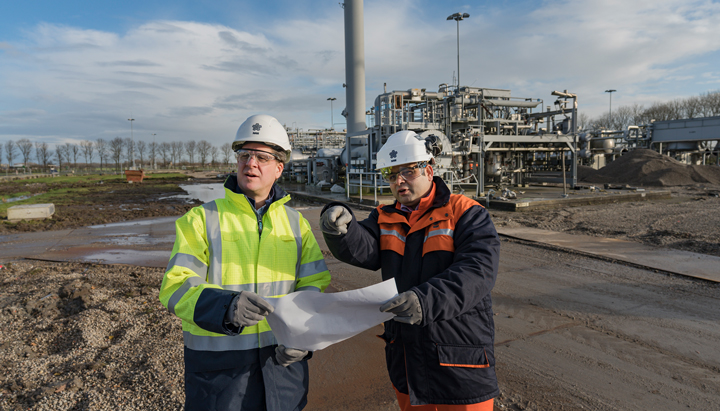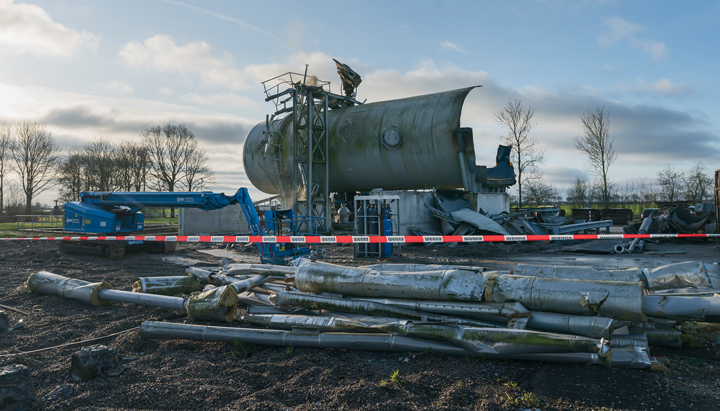Working for the future of Groningen
Special Report
The NAM joint venture with ExxonMobil (Shell interest 50%) in partnership with the Dutch government operates the Groningen gas field in the Netherlands. NAM continues to help people living in Groningen who regrettably have been affected by earthquakes linked to gas production.
In 2019, the Dutch government decided to reduce NAM’s production from the Groningen field to zero by 2022, eight years earlier than previously stated. NAM is working with the government on plans to close down production as quickly and safely as possible while considering the energy security of the Netherlands. NAM is safely decommissioning its facilities and consulting with local municipalities to plan for the future of these production sites.
Helping local communities
NAM continues to address the impact of earthquakes on people in Groningen, including supporting a programme to strengthen houses and public buildings, when asked to do so by the responsible authorities. The programme is delivered by the local and federal government collaboration called the National Coordinator for Groningen.
NAM has supported several socio-economic initiatives for the Groningen region. For example, helping develop a social economic board that creates new business opportunities and jobs. NAM also runs the Livability and Sustainability programme to upgrade several community centres with more efficient power, such as solar panels and LED lighting.

Safe and responsible decommissioning of surface infrastructure at gas production facilities is a priority for NAM.
Handling damage claims
NAM is settling outstanding damage claims for affected residents, although it is not involved in the administration of these claims. All claims are now handled by independent public organisations set up under a new policy announced by the Dutch government in 2018.
NAM was, and will remain, responsible for all earthquake-related costs. Shell has provided a guarantee that it will fund its share of these costs.
Planning for the future
In 2019, NAM began decommissioning the surface infrastructure at its gas production facilities in Groningen. Safe and responsible decommissioning is a priority for NAM. This includes restoring the sites and surroundings in line with the requirements of landowners and relevant legislation, while taking NAM’s own environmental standards into account.
NAM began the first phase of the permanent closure of the Groningen field by decommissioning the surface facilities in Ten Post, a small village in north-east Groningen, and one of 20 production sites to be decommissioned. Production at Ten Post stopped in February 2018 and plugging of the gas wells was completed in March 2019. By 2022, NAM plans for all wells in Ten Post to be abandoned.
NAM is proactively discussing plans with neighbours of the production location, the local municipality and the Economic Board Groningen to reuse locations like Ten Post for renewable energy facilities.
External voice

Christiaan Wiepkema
Member of the community association for Steendam village, Groningen
Christiaan Wiepkema is a member of the community association for Steendam village in Groningen that has set up an energy co-operative. This co-operative is in discussions to convert NAM gas facilities in Siddeburen to renewable energy.
“Self-reliance and creativity come naturally to us in Steendam. When we needed fast internet, and the authorities couldn’t help, a group of us dug trenches, laid cables and installed a superfast network. Now we have formed an energy co-operative with around 200 people.
“We’ve had NAM’s gas production nearby for years, and of course seen the impact of earthquakes, but we got thinking about life after this. A co-operative gives us freedom and ensures different opinions are heard on important decisions. We are building a solar farm and a wind park to obtain green electricity for our entire village. We are also looking to replace the gas that powers our village with renewable energy.
“We want to use hydrogen to store and transport this renewable energy, but installing a hydrogen network is complicated and not feasible for a small village. So, we are talking to Economic Board Groningen and NAM about using the nearby gas facilities at Siddeburen. It seems like a waste to leave all that infrastructure unused in the ground.”

In 2019, NAM began decommissioning the surface gas facilities in Ten Post, one of 20 production sites to be decommissioned.
 Climate change
Climate change
 Sustainable development goals
Sustainable development goals
 Safety
Safety
 About our data
About our data
